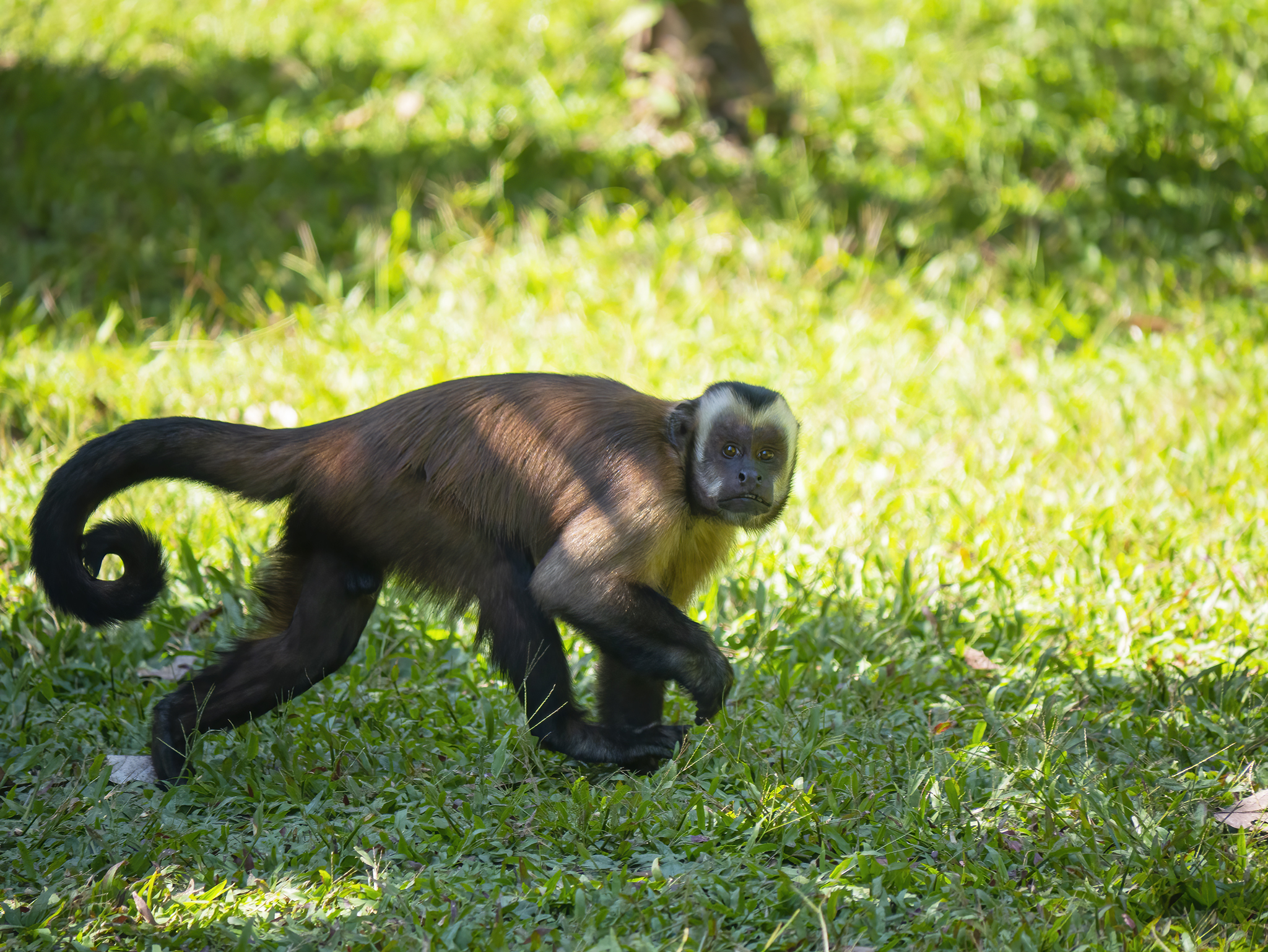This pensive primate, with its inquisitive gaze, is a Brown Capuchin Monkey.
Capuchin Monkeys are among the most highly intelligent and sociable primates on the planet, and are consequently heavily integrated into human society. They often are kept as pets, used as service animals, and trained as actors in film and TV. Capuchins featured in movies like Pirates of the Caribbean, Night at the Museum and The Hangover, as well as in the sitcom Friends – as Ross’ pet monkey, Marcel.
A 2005 experiment led by famed primatologist Frans de Waal highlighted the Capuchin Monkey’s unique level of intelligence. Entitled ‘The Monkey in the Mirror’, the study demonstrated that Capuchin Monkeys display a level of self-recognition slightly below that of humans and great apes, who can identify a reflection of themselves in a mirror, but above that of other monkeys, who tend to regard their reflection as separate individual whom they do not recognise. Capuchins reacted to their own reflection with confusion and curiosity, sometimes making gestures such as lip-smacking, swaying and lengthy eye contact. The study concluded that Capuchins appeared to recognise their own reflection as “special”, even if they didn’t fully comprehend it.

For decades in the United States, Capuchin Monkeys were trained to assist quadriplegics, and could be accessed through government-funded disability support. The monkeys would perform a huge variety of tasks: turning on lights, opening bottles, flipping pages of a book, playing CDs and DVDs, even moving limbs and cleaning faces, to name just a few.
Naturally, however, this practice raised huge ethical concerns. Capuchin Monkeys have roughly similar intelligence to that of a two or three year old human, and we’d essentially been using them as slaves for a very long time. Consequently, in 2010, the Americans with Disabilities Act was re-written to exclude all animals except dogs from being legally considered service animals.

A small number of private companies continued to offer service monkeys thereafter, but by 2015, the only remaining organisation training helper monkeys was a private not-for-profit called Helping Hands. Today, while a handful of people still have the helper monkeys they were originally assigned, Helping Hands no longer trains monkeys, and is transitioning to the use of innovative technologies in disability care. They’re also transforming their training centre into a Monkey Living Centre to care for their retired monkeys!
–
This post is part of a series featuring four fantastic primates photographed at Los Amigos Biological Station in Peru. Check out our posts on the Squirrel Monkey, the Saddleback Tamarin and Toppin’s Titi to learn more!
–
Brown Capuchin Monkey (Sapajus apella), Los Amigos Biological Station, Madre de Dios, Peru


